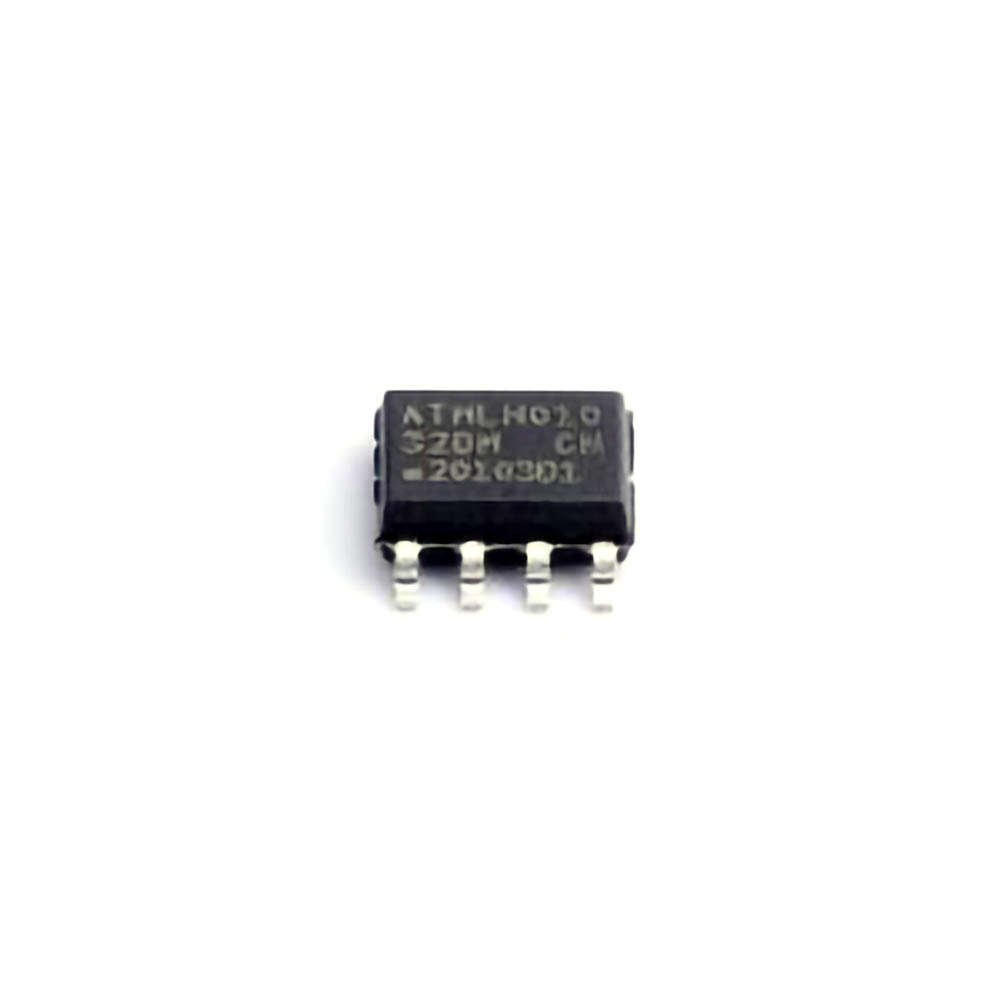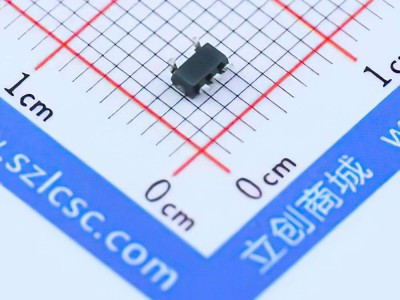
Introduction to the AT24C32D-SSHM-T and its Significance in Modern Electronics
In today’s rapidly advancing digital world, Memory storage plays a crucial role in virtually every Embedded system, from everyday gadgets like smartphones and home automation devices to more complex industrial applications. Among the many types of memory available, the AT24C32D-SSHM-T stands out as a versatile and compact EEPROM ( Electrical ly Erasable Programmable Read-Only Memory) module that offers unique features tailored for systems requiring efficient, non-volatile data storage.
The AT24C32D-SSHM-T is a 32Kb memory device that communicates through the I2C interface . Its small form factor, high durability, and low Power consumption make it ideal for applications where space is at a premium and reliability is paramount. Whether you're working with a microcontroller-based system or a sophisticated industrial solution, the AT24C32D-SSHM-T offers an Access ible way to handle non-volatile data storage. This article will delve into the programming and design aspects of the AT24C32D-SSHM-T, demonstrating its benefits and how to effectively implement it in various applications.
Understanding the Key Features and Specifications of the AT24C32D-SSHM-T
Before diving into programming and design strategies, it's essential to understand the key features of the AT24C32D-SSHM-T. This memory module provides 32Kb of storage, divided into 4,096 8-bit memory locations, and uses the I2C interface for Communication . Here’s a breakdown of its core specifications:
Memory Size and Organization: The AT24C32D offers a total of 32Kbits (4,096 bytes), organized into 128 pages, each containing 32 bytes. This page-based architecture enhances data throughput, allowing for efficient read/write operations.
I2C Communication Interface: It operates on a two-wire I2C communication protocol, which simplifies the integration process with Microcontrollers . The I2C bus only requires two lines: data (SDA) and clock (SCL), making it particularly useful for systems with limited I/O pin availability.
Low Power Consumption: With a typical operating voltage range of 1.7V to 5.5V, and a low active current consumption of 1mA (typical), the AT24C32D-SSHM-T is ideal for power-sensitive applications. Furthermore, it consumes minimal power in standby mode, ensuring long-term battery operation in portable systems.
Endurance and Reliability: The AT24C32D-SSHM-T supports over 1 million write cycles per memory location, making it durable and reliable in scenarios where frequent data rewriting is required. Its non-volatile nature ensures data retention even after power loss.
Addressing and Memory Access: With an internal 8-bit device address and the ability to support up to 8 devices on the same bus, the AT24C32D-SSHM-T can be easily integrated into multi-device systems without requiring complex wiring.
These characteristics position the AT24C32D-SSHM-T as a practical and efficient solution for embedded systems needing compact memory storage.
Applications of the AT24C32D-SSHM-T
The AT24C32D-SSHM-T is widely used in various applications across multiple industries, owing to its compact size and versatile functionality. Some of the most common use cases include:
Embedded Systems and Microcontrollers: The AT24C32D-SSHM-T is often employed in microcontroller-based designs, where non-volatile storage is required for configuration settings, calibration data, or serial number storage.
Consumer Electronics: In devices like digital cameras, home appliances, and toys, the AT24C32D-SSHM-T can store user preferences, device settings, and other critical data that must persist across power cycles.
Industrial Applications: For industrial automation, the EEPROM module is used to store critical operational data, machine parameters, or even diagnostic information that can help maintain equipment health.
Smart Cards and Security: EEPROMs like the AT24C32D-SSHM-T are often used in smart card applications where secure, persistent data storage is a necessity.
By leveraging the benefits of the AT24C32D-SSHM-T, designers can create systems that are both efficient and reliable, meeting the stringent demands of modern electronics.
Programming the AT24C32D-SSHM-T: Basics and Setup
Programming the AT24C32D-SSHM-T involves reading from and writing to its memory locations using the I2C protocol. Let's go through the general steps required to interact with this memory module.
Hardware Setup: First, ensure that your microcontroller or embedded system is I2C-compatible and that the SDA and SCL lines are connected to the appropriate pins. Additionally, connect the VCC and GND pins of the AT24C32D-SSHM-T to a suitable power supply.
I2C Initialization: In your program, initialize the I2C bus by setting up the clock speed, device address, and other parameters. The AT24C32D-SSHM-T requires a 7-bit device address, which is usually predefined in the datasheet.
Writing Data: To write data, you need to specify the memory location you wish to write to and then send the data byte to the EEPROM. Typically, writing involves sending a command that specifies the memory address, followed by the data byte to store.
Reading Data: To read data, send the device address followed by the memory location from which you want to retrieve data. The EEPROM responds by sending the stored byte back over the I2C bus.
Error Handling: Always include error handling in your code to manage potential issues such as communication failure, memory write failure, or device unavailability.
This basic interaction with the AT24C32D-SSHM-T can be extended into more complex use cases, such as managing multiple memory devices or handling larger data chunks across pages.
Advanced Design Considerations for AT24C32D-SSHM-T Integration
While the basic programming of the AT24C32D-SSHM-T is straightforward, integrating this EEPROM into a complex system requires careful consideration of various design factors to optimize performance, ensure reliability, and extend the lifespan of the memory module.
I2C Bus Management : When integrating the AT24C32D-SSHM-T into systems with multiple devices on the I2C bus, it's important to manage bus traffic efficiently. Use unique device addresses for each module and implement proper timing between read/write operations to avoid data collisions.
Page Writes and Efficiency: Writing to the AT24C32D-SSHM-T is most efficient when done in 32-byte pages. When writing smaller amounts of data, it's recommended to fill up the remaining space in the page to avoid wasted cycles. Additionally, avoid writing to the same memory location too frequently, as this can reduce the endurance of the EEPROM.
Data Integrity and Error Detection: As with any non-volatile memory, it's critical to consider the integrity of the stored data. Implement checksums, CRCs, or parity bits in your application to verify the accuracy of data read from the EEPROM. This is especially crucial in safety-critical applications.
Power-Fail Protection: Given the importance of preserving data during power loss, designing a system with power-fail detection can help ensure that any write operations to the AT24C32D-SSHM-T are completed successfully before the system shuts down. Capacitors or backup power sources can be used to power the system long enough to complete any critical writes.
Temperature and Environmental Considerations: The AT24C32D-SSHM-T is designed to operate over a broad temperature range, but extreme environmental conditions can still impact its performance. Designers should ensure that the memory module is placed in an enclosure or environment that minimizes exposure to extreme temperatures or moisture.
Maximizing Data Throughput: In systems that require high-speed data access, optimizing the I2C bus speed can significantly improve performance. The AT24C32D-SSHM-T supports standard I2C speeds, but if your system allows, consider running the bus at higher speeds for faster data transfer.
Ensuring Longevity and Reliability of AT24C32D-SSHM-T in Embedded Systems
One of the most critical aspects of using the AT24C32D-SSHM-T in embedded systems is ensuring its long-term reliability. As with all EEPROM devices, it’s important to manage the number of write cycles to avoid wearing out the memory cells. Each byte can typically withstand over a million write cycles, but frequent writes to the same locations should be minimized.
To further enhance the longevity of the AT24C32D-SSHM-T, consider using wear leveling techniques, which distribute write operations evenly across the entire memory space. Additionally, using memory segments for non-volatile data and periodically rewriting the entire memory block can help reduce the likelihood of excessive wear on individual memory cells.
Conclusion: Unlocking the Potential of AT24C32D-SSHM-T in Modern Electronics
The AT24C32D-SSHM-T is a powerful, reliable, and compact EEPROM solution for storing critical data in a wide range of embedded systems. Its I2C interface, low power consumption, and durability make it an attractive choice for both consumer and industrial applications. By carefully managing its programming, design integration, and memory handling, developers can maximize the performance and longevity of the AT24C32D-SSHM-T in their projects. As the demand for compact, efficient, and non-volatile memory solutions continues to grow, the AT24C32D-SSHM-T remains a key player in enabling the next generation of digital devices.
If you are looking for more information on commonly used Electronic Components Models or about Electronic Components Product Catalog datasheets, compile all purchasing and CAD information into one place.


